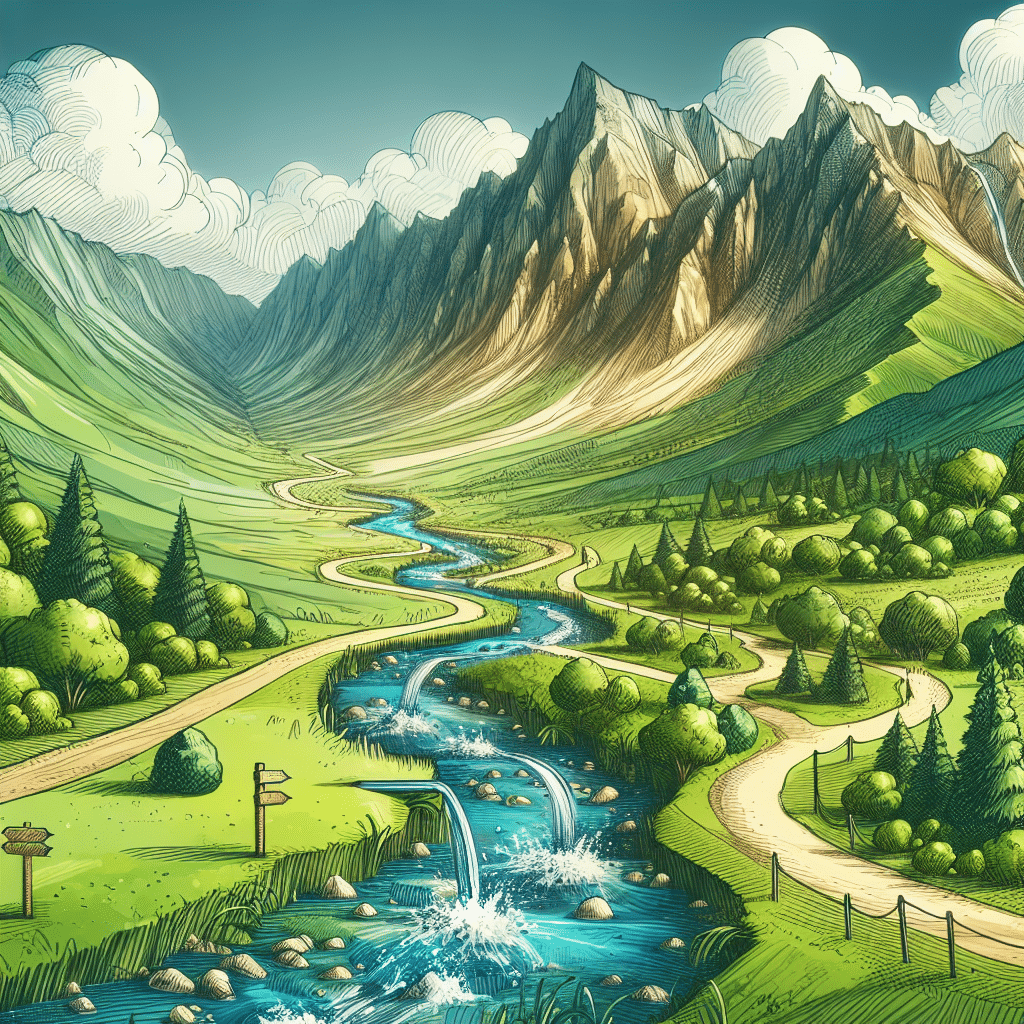Understanding Hydration Needs
On long hikes, maintaining proper hydration is crucial for optimal performance and safety. Factors like temperature, humidity, altitude, and personal fitness levels significantly impact your fluid requirements. Generally, hikers should aim to drink about half a liter (17 ounces) of water per hour. However, during strenuous hikes or in hot conditions, this number could rise.
Recognizing signs of dehydration—such as dry mouth, fatigue, dizziness, and dark urine—will help you adjust your water intake accordingly. Always listen to your body’s signals.
Planning Water Stops
Assessing the Trail
Before setting out, thoroughly evaluate your chosen trail. Consult topographic maps, guidebooks, or reputable hiking websites, focusing on the following key elements:
-
Water Sources: Identify rivers, lakes, streams, or springs along the route. Consult local trail maps to pinpoint reliable water sources. Note their distance from your hiking path.
-
Distance Between Water Sources: Calculate how far apart these sources are. It’s essential to know this to avoid running out of water. Many trails have varying distances, so adjust your plan accordingly.
-
Seasonal Variability: Water sources can dry up during droughts or low-flow seasons. Ensure you’re aware of seasonal conditions that could affect the reliability of these resources.
Mapping Out Your Stops
Once you’ve assessed the trail, begin plotting your water stops:
-
Create a Timeline: Outline your estimated hiking pace and rest intervals. Use this to determine when you’ll need to replenish your water supply.
-
Divide Your Route into Sections: Segment your hike into manageable portions based on the location of water sources. Strategically plan breaks, ensuring access to water when needed.
-
Emergency Stops: Incorporate alternative water sources to your plan. Delays or equipment failures can hinder your progress, so having backup options is critical.
Equipment for Water Management
Investing in the right equipment enhances your hydration strategy:
-
Hydration Bladder: A reservoir with a tube allows hands-free drinking, making it easy to sip while on the move.
-
Water Bottles: Lightweight, durable bottles are perfect for carrying water. Opt for insulated models to keep water cool on hot days.
-
Filtration Systems: Carry a portable water filter or purification tablets. These ensure safe drinking water from natural sources, reducing the risk of encountering harmful pathogens.
-
Collapsible Containers: Useful for collecting water at sources or for storing extra water during long breaks.
-
UV Purifiers: Compact and effective, these devices eliminate bacteria and viruses from the water, ensuring safe hydration.
Calculating Water Needs
Efficiently calculating your water needs involves:
-
Baseline Hydration: Begin by calculating the minimum amount of water you’ll likely consume based on body weight and intensity of the hike.
-
Adjust for Conditions: Increase your baseline intake based on the weather (hot or dry necessitates more water) and your exertion level (high-intensity hikes require extra fluids).
-
Plan for Dehydration Prevention: Pre-hydration is equally important. Begin your hike fully hydrated by drinking water in the days leading up to your hike.
Hydration Reminders
Set reminders on your wristwatch or hike app to encourage you to drink water regularly. Avoid waiting until you’re thirsty to hydrate, as this is often too late to prevent dehydration.
Navigating Water Quality
Knowing how to assess water quality before drinking is essential for health:
-
Visual Inspection: Clear, flowing water is generally safer than stagnant pools. Avoid discolored or foul-smelling sources.
-
Location Awareness: If a water source is near a camping area or in proximity to livestock, be cautious, as contamination may be more prevalent.
-
Filter and Purification: Carry equipment to filter or purify water when necessary. Boiling water for at least one minute is recommended for eliminating most pathogens.
Strategies for Efficiency
-
Use Efficient Hydration Packs: These can store enough water for multiple hours without extra bulk.
-
Isotonic Drinks: Occasionally replace water with isotonic drinks to maintain electrolyte levels lost through sweat.
-
Leave No Trace Principles: When refilling your water or acquiring water from a natural source, practice responsible recreation. Ensure you’re at least 200 feet (70 steps) away from any lakes or streams to prevent contamination.
-
Color-Dye Testing: Use food coloring to check filtration effectiveness. If the dye appears after filtration, your filter may need replacement or may not be effective against certain pathogens.
Community Resources and Feedback
Connecting with other hikers can offer insights into reliable water sources on your chosen trail. Online forums and local hiking groups often share recent experiences and updates. Apps like AllTrails or Hiking Project include user-uploaded water source information.
Local Hiker Recommendations
Recommendations from experienced hikers can pinpoint often overlooked sources or the current status of known wells, springs, or streams.
Stay Informed
Keep an eye on new technologies and methodologies in hydration techniques for outdoor adventures. Regularly researching hydration best practices ensures you remain well-equipped and prepared every time you hit the trail.
Hydration Packaging Technology
Stay updated on the latest hydration innovations, such as self-filling water bottles that use innovative pumping systems.
This comprehensive plan for water stops on long hikes merges preparation with execution, allowing you to focus on the adventure ahead while ensuring you’re adequately hydrated for optimal performance on your journey.
